 (EDITOR’S NOTE: Due to an error in the publishing system, this post was supposed to go live on Friday morning, but did not. We will publish the full ranking of the Best of the Best Picture Oscar Winners poll with 12 Years a Slave included tomorrow morning, Tuesday, March 4, 2014)
(EDITOR’S NOTE: Due to an error in the publishing system, this post was supposed to go live on Friday morning, but did not. We will publish the full ranking of the Best of the Best Picture Oscar Winners poll with 12 Years a Slave included tomorrow morning, Tuesday, March 4, 2014)
This year marks the 86th anniversary of the Academy Awards, an annual celebration of the best in motion pictures selected by more than 6,000 members of the Academy of Motion Picture Arts and Sciences. Conceived by legendary studio magnate Louis B. Mayer as a mediator for labor disputes, the Academy started with a modest membership of 36 and has since become one of the most important organizations with one of the most prestigious and sought-after prizes anywhere in the world.
An Academy Award can mean a better career. It can lead to more lucrative offers. It can add millions to a film’s box office. There is no other film award that can compare in terms of its global importance and familiarity.
Over the last 85 selections of the best films of each year, the Academy has made landmark choices and questionable ones. For each brilliant choice, there’s an equally polarizing one. Even when terrific movies lose out to more important films (think 1941’s How Green Was My Valley winning over Citizen Kane), the Academy finds admirers and detractors with relative ease.
In celebration of the 85 prior years of Oscar winners, the Online Film Critics Society has decided to rank all past winners from worst to best. There have been 86 films that have received a Best Picture prize from the Academy. This includes the one-year split of the prize between Best Production for 1927/28 which went to the box office success Wings and Unique and Artistic Picture which went to the more stylish Sunrise, a Song of Two Humans. Although the Academy typically leaves Sunrise off its list of the group’s Best Picture winners, we have decided to include it for ranking purposes.
Starting today and posting each day this week, we will start at the bottom and work our way to the top of the list of film’s considered by the voting members of the OFCS as the Best of the Academy’s Best Picture winners. Then, on the Monday following the Oscars, we will announce where this year’s Best Picture winner will fall into our list of the Best Best Pictures. (Introduction written by Wesley “The Oscar Guy” Lovell)
We round out our top twenty Best Picture rankings today. This list includes the one and only tie in our rankings and we’ve asked our members to submit commentary on the top ten films on the list.
20. Amadeus (1984)
Synopsis: A look at the career of acclaimed composer Wolfgang Amadeus Mozart through the eyes of his longtime secret rival Antonio Salieri.
Trivia: This was the first and only time an actor playing the title character lost the Oscar to an actor from the same film. It was also the last film that two actors were nominated in the Best Actor category for the same film.
Films It Beat:
The Killing Fields
A Passage to India
Places in the Heart
A Soldier’s Story
19. Rebecca (1940)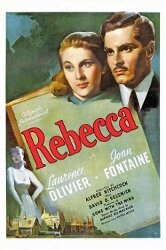
Synopsis: A newly married woman must come to terms with the specter of her husband’s late first wife.
Trivia: This was director Alfred Hitchcock’s first American film and the only one of his films to win Best Picture. He never won an Oscar for Best Director, not even for this film. This film’s tally of two Oscars from 11 nominations marks only the second time in Oscar history that a film won fewer than three Oscars.
Films It Beat:
All This, and Heaven Too
Foreign Correspondent
The Grapes of Wrath
The Great Dictator
Kitty Foyle
The Letter
The Long Voyage Home
Our Town
The Philadelphia Story
18. The Apartment (1960)
Synopsis: Allowing the executives at his company use his apartment for extramarital affairs, the young man hopes his assistance will lead him to a promotion at work, but finds those goals frustrated when he falls in love with a switchboard operator in the building.
Trivia: This was the last traditional black-and-white film to win Best Picture at the Oscars. Two other films since have won Best Picture filmed in black-and-white: Schindler’s List had only two segments shot entirely in color at the beginning and end of the film; and The Artist which was 100% black-and-white.
Films It Beat:
The Alamo
Elmer Gantry
Sons and Lovers
The Sundowners
17. The French Connection (1971)
Synopsis: Two New York City cops stumble upon a drug smuggling operation.
Trivia: This is the first R-rated film to win Best Picture at the Academy Awards. Midnight Cowboy would later have its X rating downgraded to R, but The French Connection still holds the distinction.
Films It Beat:
A Clockwork Orange
Fiddler on the Roof
The Last Picture Show
Nicholas and Alexandra
16. The Bridge on the River Kwai (1957)
Synopsis: Confined to a Japanese Prisoner of War camp, a reluctant British colonel agrees to over see his men as they construct a railway bridge for their captors.
Trivia: The film won seven of its eight nominations at the Oscars. The only award it did not win was for Best Supporting Actor Sessue Hayakawa who had become the first Asian actor to earn an Academy Award nomination.
Films It Beat:
Peyton Place
Sayonara
12 Angry Men
Witness for the Prosecution
15. No Country for Old Men (2007)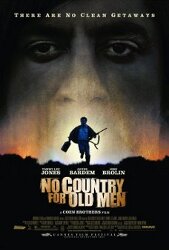
Synopsis: Stumbling upon a bad drug deal, a hunter uncovers a cache of drug money. Two groups want the money back and both will stop at nothing to find it.
Trivia: No Country for Old Men was only the second film in Oscar history to win Best Picture that was written, directed and edited by the same person(s). Titanic was the first. In addition, Javier Bardem became the first Spanish actor to win an Oscar in any of the acting categories.
Films It Beat:
Atonement
Juno
Michael Clayton
There Will Be Blood
13. (TIED) Unforgiven (1992)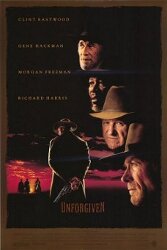
Synopsis: An aging gunslinger takes on one final job with the assistance of an old partner of his along with a new partner.
Trivia: This was the third and final western to win Best Picture at the Academy Awards. The prior two were Cimarron and Dances With Wolves.
Films It Beat:
The Crying Game
A Few Good Men
Howards End
Scent of a Woman
13. (TIED) One Flew Over the Cuckoo’s Nest (1975)
Synopsis: A headstrong, rebellious inmate at an asylum convinces his fellow patients to rebel against the strict, domineering nurse.
Trivia: This was the second of only three films to receive Oscars for Best Picture, Best Director, Best Actor, Best Actress and any screenwriting award. The other two were It Happened One Night in 1934 and The Silence of the Lambs in 1991.
Films It Beat:
Barry Lyndon
Dog Day Afternoon
Jaws
Nashville
12. Schindler’s List (1993)
Synopsis: A German munitions manufacturer and war profiteer attempts to rescue as many Jews as he can by giving them jobs in his factory.
Trivia: It was the first and only film dealing with the Holocaust to win an Academy Award for Best Picture. This was legendary filmmaker Steven Spielberg’s first Oscar for Best Director, 16 years after his first nomination in the category for directing Close Encounters of the Third Kind. This was his first film to win Best Picture, 18 years after his first nomination for Best Picture for Jaws.
Films It Beat:
Schindler’s List
11. The Silence of the Lambs (1991)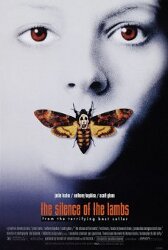
Synopsis: In order to catch a modern serial killer, a young F.B.I. agent must convince a psychotic cannibal to help her stop him.
Trivia: It is considered the first and only horror film to win the Academy Award for Best Picture. It was only the third horror film nominated, following 1975’s Jaws and 1973’s The Exorcist. No horror film has been nominated since.
Films It Beat:
Beauty and the Beast
Bugsy
JFK
The Prince of Tides
10. All Quiet on the Western Front (1929/30)
Trivia: This was the first anti-war film to win Best Picture at the Oscars. It was also the first film to be shot from the perspective of non-Americans in wartime to win Best Picture.
Films It Beat:
The Big House
Disraeli
The Divorcee
The Love Parade
Thoughts from Our Members:
Dispelling all the myths we’ve clung to through the years about the rocky early years of sound cinema, All Quiet on the Western Front premiered just two-and-a-half years after The Jazz Singer, and revealed in the process a sophistication and depth of filmmaking that we’re still only able to match, never to surpass. Its creation of a hellish warzone made up almost entirely through sound calls to mind such modern war classics as Saving Private Ryan, but the real genius of the film isn’t that it’s such a pitiless, angry reiteration of the common “War Is Hell” theme. What makes the film a timeless classic and one of the most unambiguously deserving Best Picture Oscar winners of all time is how it channels that message through one vividly-etched solider (played by newbie Lew Ayres) and his descent from youthful optimism to battle-scarred wisdom. It all culminates in one of the most flawless and heartbreaking final scenes in the movies. – Tim Brayton (Antagony & Ecstasy)
The first war movie of the sound era to win the top Oscar, and the inaugural talkie for director Lewis Milestone, All Quiet on the Western Front is an important marker in terms of Hollywood’s depictions of the horrors of armed conflict. This adaptation of Erich Maria Remarque’s novel is every bit as grim and unsettling as the original book. The scenes on the front lines show combat as desolate and deadly, the exact opposite of the glorified picture painted for the young soldiers when they are encouraged to enlist. Milestone handles the two sides well, avoiding letting the message overtake the story, and coercing sensitive performances out of his cast. Lew Ayres gives a touching portrayal of the lead, a man who eventually sees too much and is left forever changed. The years have not dulled All Quiet on the Western Front‘s impact. On the contrary, as countries continue to fight one another over borders and fundamental human rights, it might make you even sadder knowing how little has changed over the last century. – Jamie S. Rich (DVD Talk)
9. On the Waterfront (1954)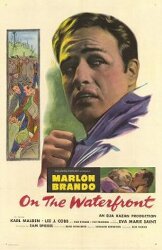
Trivia: One of six Best Picture winners selected for the inaugural National Film Registry preservation list in 1989. At the time, there were only 62 films that had been named Best Picture. This was out of a On the Waterfront was also the first film to earn three nominations in the Best Supporting Actor category. It would not happen again for 18 years.
Films It Beat:
The Caine Mutiny
The Country Girl
Seven Brides for Seven Brothers
Three Coins in the Fountain
Thoughts from Our Members:
Though sometimes dismissed as an apologia for its director naming names to the HUAC, Elia Kazan’s On The Waterfront remains one of the greatest Best Picture winners because it turns a simple story into something resembling an American foundation myth; a morality tale of huge scope and furious intimacy. Whether or not Kazan intended it as a platform to excuse his own actions, the film itself is a deeply felt exploration of what it takes to do the right thing. The personal costs experienced by Marlon Brando, giving one of his best performances, as he becomes ostracized from his friends, betrayed by the people he loved most, and brutally beaten, are detailed in meticulous, heartbreaking detail, lending reality to an abstract concept that could have been too high-minded, obvious or distant. A cri du couer with intelligence beneath the anguish. – Edwin Davies (A Mighty Fine Blog)
The significantly unglamorous world of the New Jersey docks and the lives of the longshoremen employed there is the foundation of this McCarthy era allegory on loyalty and corruption. The retroactive condemnation by many in the film world of director Elia Kazan’s actions in naming names before the House Un-American Activities Committee has resulted in the film’s importance being diminished over the years. But the gritty, quasi-Neo-Realist approach to the material and the refreshingly raw performances by Marlon Brando and Eva Marie Saint (both Oscar winners) offers a harsh view of ordinary people caught up in extraordinary crises. – Phil Hall (Film Threat)
8. Annie Hall (1977)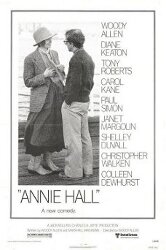
Trivia: This was the last traditional comedy to win Best Picture at the Oscars. Other hybrid comedy/drama films have won since, but no genuine comedies have.
Films It Beat:
The Goodbye Girl
Julia
Star Wars
The Turning Point
Thoughts from Our Members:
Woody Allen’s Annie Hall remains one of the few comedies to win the Academy Award for Best Picture. Why Oscar rewards so few comedies is unfathomable, for Annie Hall is just as relatable for audiences today as it was for audiences in 1977. Annie Hall marks a turning point in Allen’s career in which he took a step forward from the hilarious screwball comedies and existential sex farces of his early films, and evolved as both a comedian and as an artist. Annie Hall features many of the highbrow reference points and the doses of magical realism that characterize Allen’s films both before and after it, but his subtle observations on life and love bring them down to earth and make for a profound human comedy. From the subtitles that convey an inner dialogue of awkward uncertainty during the first date between Alvy (Allen) and Annie (Diane Keaton) to the ghostly double exposure that marks the eventual distance between them, Annie Hall is a humorously self-reflexive study on the insecurities that define and fracture relationships. Best of all, though, might be Diane Keaton’s endearingly scatterbrained, stylish, and Oscar-winning turn as Annie, which further marks Annie Hall as one of the definitive actor-director collaborations in film history. The power of a film like Annie Hall could not seem more relevant today. Woody Allen’s film grossed just over thirty-eight million dollars when it scooped the Best Picture Oscar for 1977 over the VFX blockbuster Star Wars, which earned six Oscars at the ceremony. Annie Hall‘s Best Picture win shows that a well-timed joke remains one of the cinema’s greatest special effects. – Patrick Mullen (Cinemablographer)
Inspired by Federico Fellini’s 8½, Annie Hall contains the seeds of the deconstructionist template Woody Allen has avidly pursued throughout much of his career. Allen’s seventh film as a director — co-written with collaborator Marshall Brickman — was the result of an elaborate screenwriting process that abandoned a murder mystery plot in favor of an existential romantic approach in order to embrace the comedian’s self-reflexive humor from multiple angles. Animation, split-screen sequences, intertitles, inner monologues, and fourth-wall-breaking asides add to the film’s rollicking quality. Annie Hall is filled with classic jokes and comic set pieces that have entered into common parlance, yet still retain their comic power regardless how many times you’ve seen the movie. The joy of “being reduced to a cultural stereotype” is up there with finding a spider “the size of a Buick” in the bathroom. – Cole Smithey (Cole Smithey.com)
7. All About Eve (1950)
Trivia: For 47 years, this film held the record for most Academy Award nominations with 14, a record it would later share with Titanic. It also holds the record for most female acting nominations in Oscar history with four: two in lead and two in support. None of them won.
Films It Beat:
Born Yesterday
Father of the Bride
King Solomon’s Mines
Sunset Blvd.
Thoughts from Our Members:
Some Best Pictures speak for themselves, none quite so eloquently as this, for which writer/director Joseph L. Mankiewicz took home Oscars for both tasks. “Fasten your seatbelts, it’s going to be a bumpy night!” “Bill’s thirty-two. He looks thirty-two. He looked it five years ago, he’ll look it twenty years from now. I hate men.” “If nothing else, there’s applause… like waves of love pouring over the footlights.” “You’re maudlin and full of self-pity. You’re magnificent!” “I detest cheap sentiment.” “The ‘theatuh,’ the ‘theatuh’–what book of rules says the theater exists only within some ugly buildings crowded into one square mile of New York City? Or London, Paris or Vienna? Listen, junior. And learn.” “Tell me this, do they have auditions for television?” “That’s all television is, my dear, nothing but auditions.” – Robert Cashill (Popdose)
An immensely quotable film, All About Eve takes the audience backstage at the theater. Legendary stage actress Margo Channing (Bette Davis) is taken in by fawning fan Eve Harrington (Anne Baxter) who is an aspiring actress who wants to learn from the best. As the film progresses, Eve subtly manipulates Margo and the people in her life, twisting the narrative to fit her personal whims, driving lovers apart and rising to stardom on the backs of the greats. The brilliant cast, led by the never better Davis and the superb Baxter, deliver some of the most energetic and compelling performances in film history. Given tart, biting dialogue by master screenwriter Joseph L. Mankiewicz, they give the audience a delicious, pointed exploration of how desparate people are for success and how easily they are taken in by deft tongues, even if there’s venom pooling beneath. – Wesley Lovell (Cinema Sight)
6. It Happened One Night (1934)
Trivia: This was the first film to win the top five Oscar categories (Best Picture, Best Director, Best Actor, Best Actress and a screenwriting award). It was also both the first comedy and the first romance film to win Best Picture.
Films It Beat:
The Barretts of Wimpole Street
Cleopatra
Flirtation Walk
The Gay Divorcee
Here Comes the Navy
The House of Rothschild
Imitation of Life
One Night of Love
The Thin Man
Viva Villa!
The White Parade
Thoughts from Our Members:
A mere seven years after sound was introduced to cinema, a zenith of the romantic screwball comedy – which relies on witty repartee delivered with elegance and panache – had already been reached. To this day, Frank Capra’s It Happened One Night has rarely been surpassed in its uproariously entertaining combination of fire-and-ice banter and sexual tension – which pushed the boundaries of the era’s restrictive Hays Code – between Clark Gable’s newspaper journalist and Claudette Colbert’s poor little rich girl on the run. A pressure cooker of a comedy, it forces Gable and Colbert together in an pact glued together by personal ambition and self-interest, in the physically constraining environment of a long Miami-to-New York bus trip, at the end of which they emerge entirely changed as individuals and forged into a couple. This film also offers one of the most amusing early examples of the impact of film on the culture at large: when, in one scene, Gable removes his shirt to reveal his shockingly bare chest, it prompted men all over America to throw out their undershirts overnight. – MaryAnn Johanson (Flick Filosopher)
At first there was an initial indifference towards Columbia Pictures’ spunky 1934 romantic screwball comedy It Happened One Night until the quirky on-screen sparks between Claudette Colbert’s pampered runaway socialite Ellen “Ellie” Andrews and Clarke Gable’s impish unemployed newspaper reporter Peter Warne tussled with one another on an unexpected off-kilter journey to love. Directed with robust flair by Frank Capra, It Happened One Night (based upon Samuel Hopkins Adams’ 1933 short story “Night Bus”) proved to be a refreshingly unconventional romancer for the film’s two reluctant and skeptical leads Colbert and Gable. From Colbert’s famous and funny sexy, leggy hitchhiking scene to Gable’s impacting fashion statement regarding men’s T-shirts, Night was an adventurous and offbeat love story that gradually registered accordingly with movie audiences and the Academy. – Frank Ochieng (SFcrowsnest)
5. Lawrence of Arabia (1962)
Trivia: Lawrence of Arabia brought David Lean his second and final Oscar for Best Director. This was Peter O’Toole’s first of eight acting nominations. This makes him Oscar’s most nominated actor never to win a competitive Oscar (he was finally given an honorary Oscar). The film is also the only Best Picture winner in history to feature no credited women in the cast.
Films It Beat:
The Longest Day
Meredith Willson’s The Music Man
Mutiny on the Bounty
To Kill a Mockingbird
Thoughts from Our Members:
Its excellence in spectacle cinema notwithstanding, as long as the Middle East is in conflict, Lawrence of Arabia will be a relevant and timeless film. As Arab states battle against their Israeli neighbours today, David Lean’s lauded and legendary epic follows the plight of the Arabs in the days of WWI through the eyes of T.E. Lawrence, the eccentric British officer who sought to unite the separate Arab tribes of the region against Turkish oppressors, sometimes in the name of the British King, sometimes in the name of his egotistical ambitions. – Alan Bacchus (Daily Film Dose)
Lawrence of Arabia is one of the pinnacles of cinema. There might be a few films as great as this, but none better. Lawrence of Arabia is many things, and if you get rid of one of them, the whole suffers: a sweeping epic with spectacular action scenes; a complex study of a very contradictory character; a comment on how manipulative the politicians are; a superb portrait of 1910’s Arabia. It also has some of the most beautiful shots ever filmed, a powerful soundtrack by Maurice Jarre, was made with an impeccable taste, and the whole cast shines. All these elements blend perfectly and give as a result almost four hours of pure cinematic gold. – Carlos del Rio (El Rincón de Carlos del Río)
4. Sunrise (1927/28)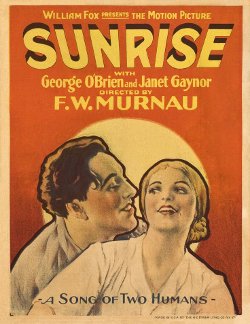
Trivia: It was the first and only winner of the Unique and Artistic Picture category. Sunrise was also the first Oscar winner for Best Cinematography and its star, Janet Gaynor, was the first Best Actress winner for this and two other films (7th Heaven and Street Angel).
Films It Beat:
Chang
The Crowd
Thoughts from Our Members:
Long a staple of the film school canon and beloved by cinephiles – it placed fifth in Sight & Sound’s 2013 poll of the greatest movies of all-time – F.W. Murnau’s masterpiece has never quite managed to garner the respect and adoration from the general culture that is enjoyed by other films of its stature. It’s unabashed sentimentality can feel overwrought to modern, cynical sensibilities, but its genius is that it treats its melodramatic murder plot with complete moral earnestness, making The Man (George O”Brien) and The Wife (Janet Gaynor) archetypes rather than stereotypes. The film’s resolution is, in its own way, quietly miraculous, a reminder that even after eight decades, special effects can rarely match the beauty of the human face and words cannot express the mystery of what we see when we dare to look another in the eye. – Kenneth R. Morefield (Christianity Today)
Sunrise – subtitled “A Song of Two Humans” – is probably one of the most underseen of Oscar winners, having the misfortune to be black & white, silent, and made by a German director – a triple death blow to modern audiences. It is, however, one of the most elegant of all the Oscar winners, a spare love triangle involving three nameless people (a man, his wife, and his lover) and a Romeo & Juliet-esque mystery that involves a murder plot to get rid of one of the trio. The radiant Janet Gaynor, playing the wife, is the standout here, but it’s F.W. Murnau’s dazzling photography – a hallmark of German Expressionism – that sticks with you. Sunrise has been alternately described as a fairy tale and a poem, and the way the camera moves through its dreamlike (and crazy expensive) sets would shape the way cinema would develop over the next 50 years. – Christopher Null (Filmcritic.com)
3. The Godfather, Part II (1974)
Trivia: It was the first sequel in Oscar history to win an award for Best Picture. The only other sequel to win was the third film in The Lord of the Rings trilogy.
Films It Beat:
Chinatown
The Conversation
Lenny
The Towering Inferno
Thoughts from Our Members:
Just two years after rising-star hotshot Francis Ford Coppola stormed the Oscars with 1972’s The Godfather he was back with Part II, an even more ambitious film that broke new ground by telling two narratives at the same time. It’s both a sequel and a prequel to the original film. And he pulled it off, becoming the only Best Picture sequel to win Best Picture. Five of the cast members were nominated (De Niro won), and Coppola also picked up statuettes for writing (with Mario Puzo) and directing. And time has been good to this film: it still carries a powerful punch, and stands on its own apart from Part I as a singular masterpiece. – Rich Cline (Shadows on the Wall)
In the sad legacy of sequels – a category of entertainment as generally frowned upon as novels by famous actors and Emerson, Lake & Palmer – there are precious few champions able to prove a convincing counter-argument to their very existence. Francis Ford Coppola’s sequel to The Godfather, however stands as one of those rare exceptions. Yes, it’s one of only two sequels (along with The Return of the King) to have won a Best Picture Oscar, but its true worthiness is exemplified by what it was following up in the first place: The Godfather remains one of the most critically acclaimed American films of all time (currently 21st in the Sight & Sound Poll), a legend, so to speak, with some of the more cribbed and copied moments in cinematic history. To follow that up, you have to be audacious – which II clearly is – and you have to be compelling entirely on your own merits, which it accomplishes shockingly well. The two accepted films comprising the Corleone saga (I believe we can all agree, the less said about the ill-conceived III, the better) remain an indelible American-style Greek tragedy, with dons and capos in place of gods and kings. No modern American director can challenge Coppola’s remarkable output from 1972-1979, where he made no less than four masterworks, beginning with the first Godfather, then making The Conversation, the second Godfather, and finally, nearly losing his lead’s life, and his own mind, Apocalypse Now. Of them all, II might just be the most astonishing, especially given the dubious track record – before and since – of its brethren. – Piers Marchant (215 Magazine)
2. Casablanca (1943)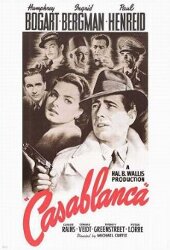
Trivia: Casablanca was the second romantic drama set during wartime, the first was Gone With the Wind. It was the first romantic drama set during World War II to win Best Picture. It was also only one of eight romantic dramas to capture the Best Picture prize. If you include the romantic comedies, then a total of 10 romantic films have ever won Best Picture.
Films It Beat:
For Whom the Bell Tolls
Heaven Can Wait
The Human Comedy
In Which We Serve
Madame Curie
The More the Merrier
The Ox-Bow Incident
The Song of Bernadette
Watch on the Rhine
Thoughts from Our Members:
Casablanca has some of the best movie dialogue ever written. Probably no movie ever made has more quotable, and repeated, lines, although with all due respect to Woody Allen, Rick never says “Play it again Sam.” Bogart’s performance is a monument to the proposition that the best movie acting happens behind the eyes. Rick is laid back and laconic most of the time, although he’s deliberately brusque, even rude, to people of whom he’s contemptuous and Casablanca holds more than a few of those. But with Bergman’s Ilsa he conveys both longing and the resentment of the spurned lover simultaneously and often without saying a word. “Casablanca,” which was shot virtually entirely on soundstages and back lots at Warner Bros., has a memorable look. Okay, Casablanca’s in the desert and fog isn’t likely, but who wants to change that scene? Cinematographer Arthur Edeson’s Rembrandt lighting is fabulous, even if the rumors that some of the shadows were actually painted on the set walls are true. It should be noted that black-and-white seems to look bigger on the big screen. Doesn’t everything? – Jim Dixon (Examiner: Albany)
The ultimate Hollywood movie, born in the depths of war and the Hays Code, Casablanca somehow survived numerous rewrites and other production changes to become one of the greatest movies ever made. It is a perfect combination of humor, drama, romance and hope in those dark times. – Robert Roten (Laramie Movie Scope)
1. The Godfather (1972)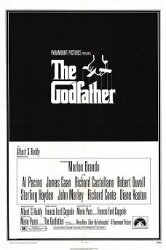
Synopsis: It was the first film about the mafia to win the Oscar for Best Picture. It was also one of only five films to earn three nominations in Best Supporting Actor. The score for the film was declared ineligible after it came to light that Nino Rota had borrowed a key musical piece from one of his prior works. That same year, star Marlon Brando won the Oscar and refused it, sending an actress in character as Sacheen Littlefeather to the ceremony on his behalf in protest of the treatment of Native Americans by the film industry.
Films It Beat:
Cabaret
Deliverance
The Emigrants
Sounder
Thoughts from Our Members:
The Godfather has achieved such classic status that I fear it’s crossed over into “assumed view” territory where many people haven’t actually seen it. That’s a shame because it truly is one of the all-time greats. Watching it recently, it’s stunning how fully realized a period world Coppola constructed. The film doesn’t feel like it was made in the ’70s and yet there it is, a near-perfect bridge between modern and classic filmmaking. – Edwin Arnaudin (Ash Vegas)
Coppola’s epic, a saga which is primarily interested in family values but disguised as a riveting gangster drama, still shines today as a superlative work. One of those rare occasions when the film belongs to nobody in particular, neither on the screen nor off it, The Godfather is collaborative cinema par excellence. The delight in watching the performances in this film come in the little things: John Cazale, as Fredo, drunkenly greeting brother Michael and Kay; Alex Rocco, as Moe Greene, as he irritatedly adjusts his tie as he shrugs off Michael’s business propositions in Nevada; Marlon Brando, as Don Vito Corleone, as he gestures for Barzini’s silence in order to challenge Tattaglia. All performers have much to work with. Indeed, the strength here comes in the writing: a Shakespearean sense of plot and purpose, with all its loose-ends tied up in a dramatic final shift—the montage sequence that juxtaposes religious indoctrination with the results of Michael’s willing shift from mild-mannered Ivy League war vet to ruthless killer. – Michael Pattison (Id Film)
The Godfather changed the rules of one of the oldest genres in movies by changing its perspective. The movie examines the world of the mob from the inside-out so that we understand the workings of the mob from their point of view. We see the story through the eyes of The Corleone family who seem inherently evil, but within this inner sanctum of mob families are actual heroes. The morality inside this society of mafia families is completely alien to our own. The word “family” comes to mean, not just blood lines, but genetic lines. It is not just a family of fathers and sons but also of generals and soldiers. We are introduced to various families which are established like isolated countries. They do business together, they make treaties, and they go to war under a long-established, self-made code of conduct. The only sin in their world is disloyalty and the wages of sin is death. – Jerry Roberts (Armchair Oscars)



